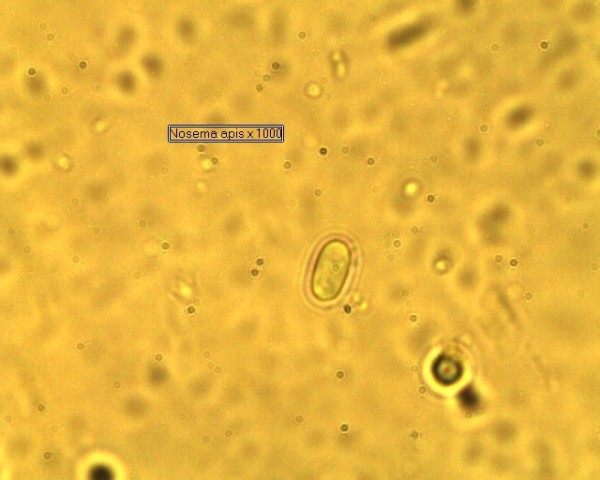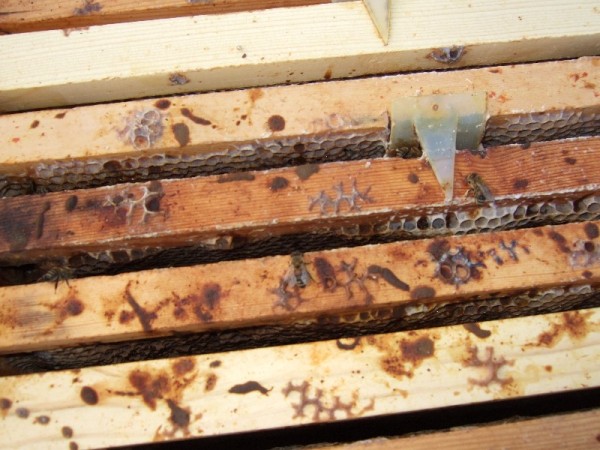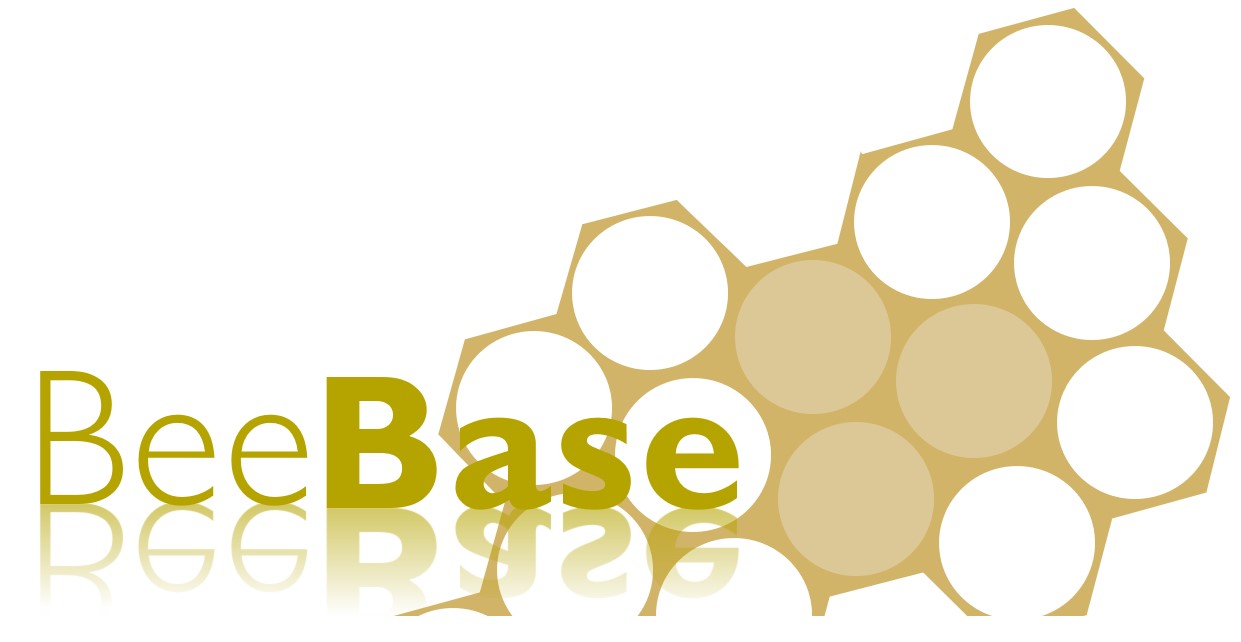Nosema species
Two Nosema species have been identified in honey bees in England and Wales, Nosema apis and the Asian species Nosema ceranae. Both are highly specialised parasitic Microsporidian fungal pathogens. Nosema spp. invade the digestive cells lining the mid-gut of the bee, there they multiply rapidly and within a few days the cells are packed with spores, this is the resting stage of the parasite. When the host cell ruptures, it sheds the spores into the gut where they accumulate in masses, to be later excreted by the bees. If spores from the excreta are picked up and swallowed by another bee, they can germinate and once more become active, starting another round of infection and multiplication.

Nosema apis under microscope X1000
Symptoms of Nosema
There are no outward symptoms of the disease. Dysentery is often seen in association with N. apis infections; this may be seen as 'spotting' at the hive entrance or across the frames. The dysentery is not caused by the pathogen, but as a consequence of infection and can be exacerbated during periods of prolonged confinement during inclement weather, especially during the spring. This can lead to the bees being forced to defecate in the hive, therefore contaminating it further.
In Spain it has been reported that N. ceranae infections are characterised by a progressive reduction in the number of bees in a colony until the point of collapse. The beekeeper may also see a significant decline in colony productivity. In the final phase of decline, secondary diseases frequently appear, including chalk brood and American Foulbrood. Eventually the affected colonies contain insufficient bees to carry out basic colony tasks and they collapse. Mortality in front of the hives is not a frequent symptom of N. ceranae infection. Dysentery and visible adult bee mortality in front of the hives are reported to be absent in N. ceranae infections. Colonies can fail to build up and even dwindle away. This can sometimes be rapid or take place over several months.
Nosema is readily spread through the use of contaminated combs. The spores can remain viable for up to a year, it is therefore important not to transfer contaminated combs between colonies and as always to practice good husbandry and apiary management, maintaining vigorous, healthy stocks, which are better able to withstand infestations.
 Dysentery on the top bars of frames
Dysentery on the top bars of frames
Diagnosis and Treatment
The simplest method of diagnosis of infections is by microscopic examination. Both N. apis and N. ceranae can be identified in adult bee samples using a standard adult disease screen - under the light microscope the spores of N. apis and N. ceranae appear as white/green, rice shaped bodies. However, both species are virtually identical when viewed using conventional microscopy but can be distinguished by an expert eye. However, more accurate discriminatory tests are available which detect differences between the two species using genetic methods. Researchers in the NBU, in conjunction with Fera staff in the Molecular Technology Unit, have developed methods based on real-time PCR; a sensitive method which can detect and quantify low levels of pathogen infection.
Treating with Medicines
The marketing authorisation for Fumidil B expired on the 31st December 2011. Any existing stocks of the product can be used up until the end of the expiry date shown on the packaging. For up-to-date advice on the availability of medicines please visit the VMD website. As with all medicines ensure that the label instructions are followed.
Good Husbandry
Instead of using medicines for treatment of Nosemosis, beekeepers should try to maintain their colonies in good health by applying good husbandry practices such as maintaining strong, well fed and disease tolerant colonies, headed by young and prolific queens. Bee keepers should also consider re-queening susceptible colonies with queens from more tolerant stocks of bees which are better able to cope with Nosema infection.
Further Information
- Nosemosis of the Honey bee, OIE Terrestrial Manual 2008 (pdf)
- Bee Craft article: Nosema ceranae, Jan 2008 (pdf)
